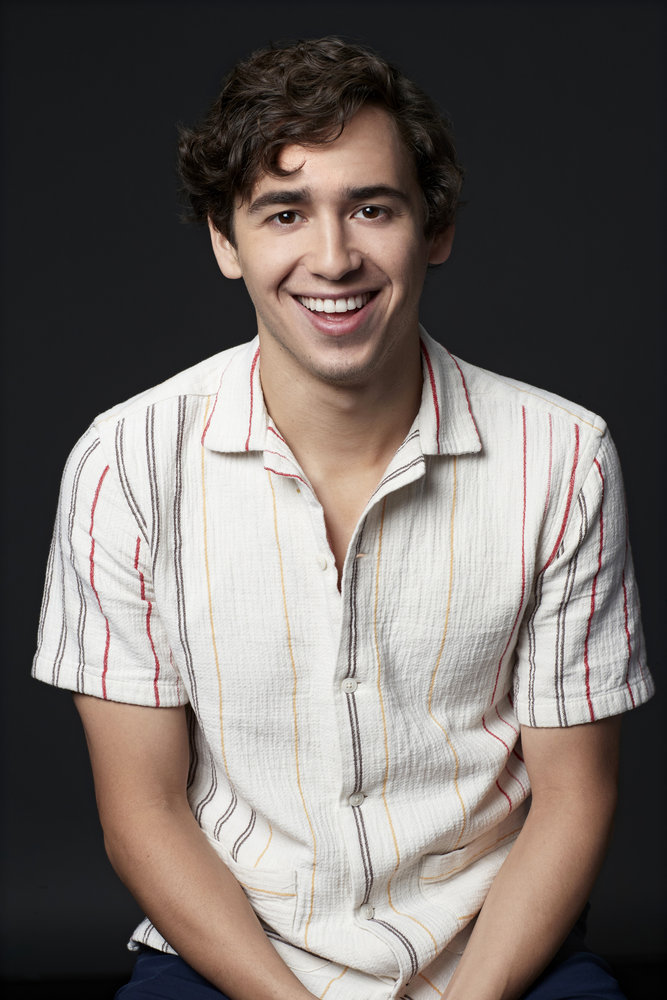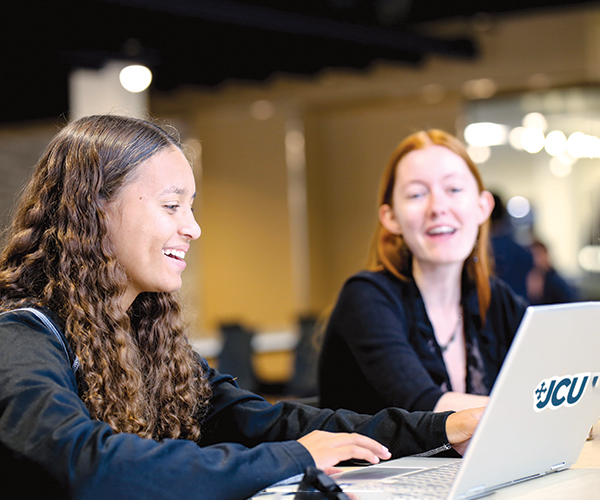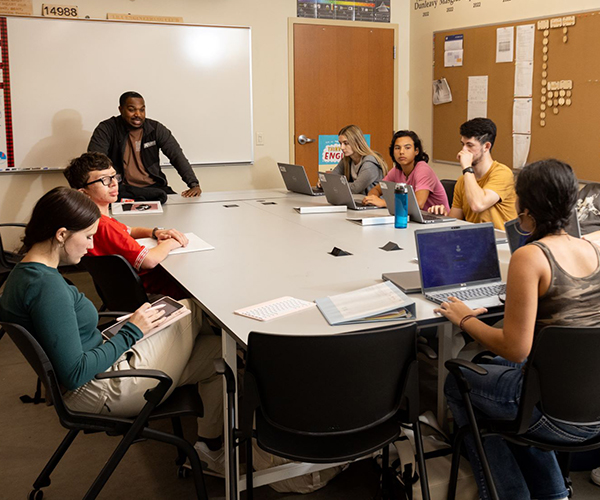Four Tips On Finding The Right School For Your Child
by Annie Zaleski | Sep. 12, 2017 | 7:00 PM

Ed Frato-Sweeney and his wife, Libby, both grew up attending public schools.
So the Hiram residents were happy sending their oldest children, fraternal twins Noah and Ellie, to Garrettsville’s James A. Garfield Local School District.
“We were perfectly set to send our kids to public school for all 12 years,” says Frato-Sweeney, director of residential and citizenship education at Hiram College.
But when the twins were in seventh grade, Frato-Sweeney was chatting with a Garfield School counselor at a basketball game. She suggested the family consider Western Reserve Academy, the coed independent boarding and day school in Hudson.Ellie attended Western Reserve’s Young Scholars program — a three-week academic immersion program for select seventh- and eighth-graders — and fell in love with the school.
“Her second or third night she was there,” Frato-Sweeney recalls, “she said, ‘Dad, I want to go here. I’m ready to sign up.’”
Ellie’s enthusiasm was infectious. Noah also applied and the siblings were admitted to Western Reserve’s class of 2020.
“It turned out to be a great fit,” Frato-Sweeney says.
They’re now sophomores and thriving. As a freshman, Noah was elected class president and played basketball, baseball and soccer. Ellie, meanwhile, serves as sophomore class president this year. With students from 24 states and 15 countries, the boarding school has expanded their social and educational circles.
“We consider it probably our best parenting decision that we’ve ever made,” he says.
During Ellie and Noah’s junior or senior year, they can participate in Western Reserve’s yearlong Compass guided study program. For past projects, students have written books, choreographed a dance performance and taught GED readiness at a women’s shelter. Likewise, a summer internship program, chosen from 15 disciplines, offers real-world experience at organizations such as the Cleveland Clinic and the Cleveland Indians.
“Having a solid educational foundation is such a springboard for success later in life,” says Dan Morrissey, Western Reserve’s dean of admission and financial aid. “And when I say educational foundation, I don’t mean geometry or science. I mean learning how to learn.”Nationally, 5.4 million students — or about 10 percent of students overall — were enrolled in private elementary and secondary schools in the 2013-2014 school year, according to the most recent figures from the National Center for Education Statistics.
Yet choosing a private school can be intimidating, whether you’re enrolling in pre-K or high school. Northeast Ohio has a bounty of well-regarded independent and parochial schools with unique features — single-gender education, religious affiliations, on-campus housing, a Montessori approach — and academic specialties.“We’re at such an advantage in the Cleveland area to have such fantastic independent school options,” says Katherine Chapman, director of middle school admission at Hathaway Brown School in Shaker Heights. “We all do offer unique experiences. It really is all about fit.”
Start the Search
Before the private school journey begins, parents should do a little homework on application deadlines and the overall process, says Sara Stephenson, director of enrollment management at University School, which has campuses in Hunting Valley and Shaker Heights.Start with the basics on school websites, printed collateral and promotional videos. This initial research can offer a foundation in programs, deadlines, tuition and financial aid that allows for more meaningful interactions during open houses or personal visits.
“[Families] can move forward and devote more time to the experiences and the relationships,” Stephenson explains. “You can ask deeper, more probing questions.” Western Reserve’s Morrissey suggests gathering metrics such as year-over-year retention and graduation rates, standardized test scores, gender breakdown, faculty-student ratio, average class size and students per grade. Schools should be able to share these numbers in writing, he says. So don’t be afraid to ask for them.
A clear sense of your child’s personality traits and academic and extracurricular strengths can also be useful before starting a search in earnest. Similarly, it’s important to not only evaluate how a school’s specific offerings match your child’s interests but also the variety of its clubs, sports and academic opportunities, which may unlock new ones.
“For instance, if your daughter has an interest in playing rugby, does that school offer that program?” asks Kathy Flinn, vice president of enrollment and marketing at St. Joseph Academy in Cleveland. “If she’s good in math, do the courses that are being offered by a school help her advance through her four years?”
Since independent schools aren’t tied to the common core or the standardized testing that dictates public schools’ subject matter and approach, individual and class interests can open interesting lines of questioning, says Hathaway Brown’s Chapman.
“You can just see so much more creativity and the dynamic nature of the curriculum,” she says. So ask about teaching methods and educational philosophy, Chapman suggests.
When Jenni Baker and her daughter, Caroline, were weighing private high schools, they gathered advice and recommendations from a wide circle. Baker talked to administrators and teachers at Caroline’s grade school, Lakewood Catholic Academy, as well as friends whose children had attended the schools she was considering.
“I did a lot of fact-finding that way,” Baker says. “I even talked to some of the daughters of friends of mine about their perspective.”
Parents should continue asking questions at school open houses, which give families a more structured chance to talk to teachers, administrators and current students. In addition, be mindful of the overall impression an open house leaves.
“Look with your head at the facts and the figures,” Stephenson says. “But also feel it with your heart. Look at people’s faces, feel how it feels, look at how your child is feeling. And are those two pieces, your head and your heart, the same or are they different?”
Wherever possible, parents and students should take a private school tour, and students should spend an entire day on an official (or unofficial) shadow or visit day to get the full experience. Being in a classroom, watching teachers interact with students and walking the halls to witness how students behave is crucial, says Kristin Kuhn, Hathaway Brown’s director of infant and toddler center, early childhood and primary school admission.
“How are they interacting with one another?” she asks. “Do they respect one another? Are they respecting their teachers? Is there joy? Is there a love of learning? What kind of community feel do you have when the people are actively here in the building?”
Parents should use these visits as an impetus to talk with their child about the experience and tease out interests or concerns. Chapman recommends posing questions such as:
“What was different from your current school? What could you see yourself participating in? What were some of the highlights of your day?”
For Baker and her daughter, a private tour convinced them the culture at St. Joseph Academy would be a perfect fit. Likewise, Caroline’s interest in science and math matched with the school’s Health Sciences Honors Program, which prepares students for health care careers via academic work and professional shadowing.
“She just felt, I can see myself here,” Baker says.
Apply for Aid
Don’t simply write off a private school education after looking at the sticker price.Northeast Ohio’s private schools offer a wealth of financial aid ranging from need-based to merit awards. Yet just as in the search for the right school, navigating the complexities of financial aid requires open communication with potential schools about applications, deadlines and requirements.
The good news is that independent schools are frequently willing to work with families to ensure students are able to attend if admitted, says Chapman.
“It’s important for us to have a diverse student body,” she says. “It’s more about finding the right fit for a girl who’s going to be successful here academically and then we really do our best, the financial aid committee does, to meet the need too.”
Being clear on the financial aid requirements up front can also prevent heartache in the future. For example, some schools need financial aid information at the same time as application forms; others start the conversation after an admission offer is extended.
One thing remains almost universal, however: Deadlines are crucial.
“As soon as the deadline passes, we’re out of financial aid for the most part,” says Morrissey. “It’s very limited after the deadline. The rule of financial aid is, ‘The early bird gets the worm.’”
In general, need-based financial aid is standardized based on family income, tuition costs for other children and other measures, while merit-based aid is more dependent on a school’s needs in a given year and a child’s accomplishments.
“You may get a huge merit aid award from one school and not receive any merit aid from another,” says Morrissey.
When evaluating costs, be sure you’re comparing shiny red apples to shiny red apples. Is lunch included in tuition or separate? Are there additional lab fees or textbook costs? Do you pay for every field trip? Do you pay for before- or aftercare? How much is busing?
“When you’re looking at a budget, make sure you have the total,” Stephenson says.
Many schools help parents by offering payment plans, ranging from a discount for paying up front or for multiple siblings to quarterly or monthly installments.
“Definitely look at approaching this as a lifelong investment for your child,” she says.
For Frato-Sweeney, having a frank and open conversation with Morrissey about whether Noah and Ellie would fit in at Western Reserve Academy eased his mind. It also helped them decide they were willing to move around their family budget to send the twins to the school.
“Sometimes families look at the price tag and say, ‘That’s just not for us. We can’t make that investment,’ ” Frato-Sweeney says. “What I would say is: A) it’s worth the investment; and B) work with the school and see what options there are. Sometimes there are options — and, in our case, there were.”
Find your passion
As investments go, sometimes the returns on a private school education can’t be fully quantified in dollars and cents. Smaller class sizes, strong college counseling connections and a deep sense of mission create unique environments for success.“[Teachers] just get to know students in a different way, which allows them to then push them to pursue their interests,” says Beth Titus Lazzaro, director of enrollment management, marketing and communications at Gilmour Academy in Gates Mills. The Catholic school uses a Montessori-based system for toddlers and kindergarten, while the upper school runs on a block schedule with 90-minute classes.
“The mission of the school will give you a lot of information about how they will guide their programs,” says St. Joseph’s Flinn. “So if you’re not aligned with that mission, I don’t think it’s going to be a fit to begin with.”
Growing up, Michele Hearns and her four siblings went to public school, but her husband and his five siblings attended Catholic elementary and high schools. When it came time for the couple to decide on where to send their three kids — a girl and two boys — private school won out.
The trio attended St. Raphael School in Bay Village. For high school, their daughter, now a junior in college, went to Magnificat, while their sons, a 2017 grad and a 17-year-old senior, chose St. Ignatius.
Academic rigor at both schools helped guide their decision. “My kids were super-ready for college,” Hearns says. In fact, her older son, Owen, was admitted to a prestigious political science and economics program at Trinity College Dublin.
But the schools’ religious affiliations were equally important to Hearns. “It gave my kids and [me] a place to grow in our faith,” says the freelance graphic designer.
St. Ignatius’ service-oriented approach has also helped Hearns’ sons expand their horizons. Over the summer, her youngest, Gavin, spent 12 days digging latrines in a remote village in the Dominican Republic. He’s also active with the Jesuit school’s Arrupe Neighborhood Partnership, which pairs students with Ohio City schoolchildren. Among other things, he helps kids build Lego robotics and tutors them on violin.
“I just love that I see them growing by giving back,” Hearns says. That commitment to growth through service is vital to St. Ignatius’ credo. “We are looking for kind-hearted people,” says Patrick O’Rourke, the school’s director of admissions. “We have good academics, good sports, good fine arts, a good cafeteria.” O’Rourke, who also teaches Latin and is the varsity hockey coach, chuckles at that last bit. “But the most important thing we do is service,” he says. “If a family’s not open to that, then they probably would want to cross us off their list.”
Be Flexible
Even if you think you know what school is right for your family, keep an open mind. Be open to a different opportunity if one arises.
A student might fit better at a school starting in sixth grade rather than kindergarten or even high school.
“Nobody has a crystal ball,” Stephenson says. “You’re doing the best you can for your child. Going in, it’s OK to still have some questions. You have to use your gut and your instinct, and you have to use your trust.”
But it’s not the end of the world if things don’t work out initially, Morrissey says.
“There are a percentage of kids who transfer every year, and transferring is OK,” he says. “You haven’t failed. Your son or daughter hasn’t failed. It just means the fit is a little off.”
In fact, multiple administrators speak of prioritizing finding the “right fit” and making sure your chosen school meshes with your child’s personality — within reason.
“We try and tell parents, ‘As much as your child’s input is important, it is an adult decision,’ ” says Kuhn.
Morrissey echoes this sentiment and adds that sometimes parents need to be patient when trying to tease out how their child is feeling.
“It’s a really hard thing to do for parents, not to advocate,” he says, “but to back off a little bit and allow their son and daughter some time to articulate what it was about a certain school that felt so good or didn’t feel right.”
Choosing the right private or independent school is an exciting process that’s ultimately worth the stress.
“You have to think about your child at the end of the day and who they really are,” says Lazzaro. “Follow your gut when you have the experience — where you think they’re going to be most successful.”
Trending
-
1
-
2
-
3
-
4
-
5










